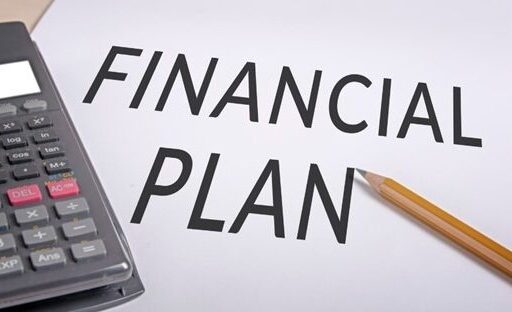
Think about this: You’re sitting on a porch swing, a cool breeze rustling the bushes, a cup of espresso in hand, and never a single deadline looming over your head. Retirement—sounds dreamy, proper? However right here’s the kicker: that idyllic scene doesn’t simply occur. It takes planning, a little bit of grit, and a few sensible strikes in the present day to make tomorrow really feel like a everlasting trip. I discovered this the onerous approach when my Uncle Joe retired at 65 with huge plans to journey—solely to comprehend his financial savings wouldn’t even cowl a weekend in Vegas. Let’s not let that be your story.
Retirement planning isn’t nearly stashing money beneath the mattress (although wouldn’t that be enjoyable?). It’s about crafting a life you’ll love when the 9-to-5 grind fades away. Whether or not you’re 25 or 55, this information will stroll you thru each nook and cranny of getting ready for retirement—consider it as your treasure map to monetary freedom. We’ll cowl why it issues, how you can begin, the instruments you’ll want, and even peek into real-life examples of what works (and what doesn’t). Able to dive in? Let’s make your golden years really golden.
Why Retirement Planning Feels Like a Superpower
Let’s begin with the massive “why.” Retirement planning is like giving your future self a high-five—it’s about taking management now so that you’re not scrambling later. Based on the U.S. Census Bureau, the typical American lives to about 79, which means should you retire at 65, you’ve obtained roughly 14 years to fund. That’s 14 years of groceries, Netflix subscriptions, and perhaps a visit to Tuscany should you’re feeling fancy. With no plan, these years may flip right into a irritating recreation of monetary Jenga.
Take my buddy Sarah, as an illustration. At 35, she began tossing $200 a month right into a retirement account. Nothing wild—simply constant. Quick ahead 30 years, and due to compound curiosity (extra on that later), she’s sitting on a nest egg price over $300,000. In the meantime, her brother Mike, who “lived for in the present day,” is now 60 and panicking as a result of his financial savings account has lower than what Sarah spends on espresso yearly. The distinction? Planning. It’s not about deprivation; it’s about superpower-level foresight. The Worker Profit Analysis Institute discovered that solely 42% of employees have even tried to calculate how a lot they’ll want for retirement—so should you’re studying this, you’re already forward of the curve.
When Ought to You Begin? (Spoiler: Yesterday)
Right here’s the reality: the most effective time to start out planning for retirement was 10 years in the past. The second-best time? Proper now. Age doesn’t matter as a lot as motion does. In the event you’re in your 20s, time is your BFF—compound curiosity works its magic over many years. A Bankrate calculator reveals that $100 invested month-to-month at age 25 with a 7% annual return grows to over $263,000 by 65. Begin at 45? That very same $100 a month turns into simply $38,000. Ouch.
However don’t despair should you’re late to the social gathering. My neighbor Tom kicked off his retirement financial savings at 50 after a divorce wiped him out. He maxed out his 401(okay), in the reduction of on takeout, and shoveled further money into an IRA. By 65, he had sufficient to retire comfortably in a little bit cabin upstate. The lesson? Beginning late beats not beginning in any respect. The Social Safety Administration notes that advantages alone gained’t minimize it—averaging about $1,900 a month in 2025—so financial savings are your security internet, irrespective of your age.
Step 1: Dream Huge, Then Crunch the Numbers
Retirement planning begins with a imaginative and prescient. The place do you see your self? Sipping margaritas on a seaside? Tinkering in a workshop? Volunteering at an area shelter? My mother at all times dreamed of portray landscapes in retirement—she’s now 70 and sells her work at native markets. Your dream shapes your finances. The Bureau of Labor Statistics pegs the typical retiree’s annual spending at $52,000, however yours might be larger or decrease relying on way of life.
Subsequent, estimate your wants. Specialists like these at Constancy Investments counsel aiming for 10 occasions your closing wage by retirement—say, $500,000 should you earn $50,000 a yr. Consider inflation (about 3% yearly), healthcare (a 65-year-old couple may want $315,000, per Constancy), and enjoyable stuff like journey. Use a device like NerdWallet’s retirement calculator to play with the numbers—it’s like a crystal ball to your funds.
Step 2: Construct Your Retirement Toolkit
Now, let’s speak instruments—your retirement piggy banks. The choices can really feel overwhelming, however they’re less complicated than they sound. First up: the 401(okay). In case your employer provides one, bounce on it—particularly in the event that they match contributions. It’s free cash! The IRS units the 2025 restrict at $23,000 (IRS.gov), and should you’re over 50, you possibly can add $7,500 in “catch-up” contributions. My cousin Lisa maxes hers out yearly; she calls it her “future yacht fund.”
Then there’s the IRA (Particular person Retirement Account). Conventional IRAs allow you to save pre-tax {dollars} (as much as $7,000 in 2025, or $8,000 if 50+), whereas Roth IRAs use after-tax cash however develop tax-free—excellent should you anticipate larger taxes later. Charles Schwab has an amazing breakdown of each. I began a Roth IRA at 30, and watching it develop with out tax worries looks like a little bit victory yearly.
Don’t sleep on taxable funding accounts both—suppose shares, bonds, or ETFs through platforms like Robinhood or Vanguard. They’re versatile, although much less tax-advantaged. And should you’re self-employed, a SEP-IRA or Solo 401(okay) might be your golden ticket—test Investopedia for particulars.
Step 3: Grasp the Magic of Compound Curiosity
Let’s geek out for a sec—compound curiosity is retirement’s secret sauce. It’s when your earnings generate extra earnings, snowballing over time. Image this: $5,000 invested at 7% yearly turns into $7,612 in 10 years, $19,671 in 30 years—all with out lifting a finger. Albert Einstein allegedly referred to as it the “eighth surprise of the world,” and he wasn’t mistaken.
I noticed this firsthand with my dad. He invested $10,000 in a mutual fund at 40. By 70, it was price over $76,000. Evaluate that to his buddy who saved money in a financial savings account incomes 1%—identical $10,000 grew to only $13,500. The SEC’s compound curiosity calculator enables you to check your individual eventualities. Begin early, keep constant, and let time do the heavy lifting.
Step 4: Dodge the Pitfalls
Retirement planning isn’t all sunshine—there are traps to keep away from. Debt is a biggie. Carrying bank card balances or a hefty mortgage into retirement can drain your financial savings quick. The Federal Reserve studies that 37% of retirees nonetheless have non-mortgage debt. My aunt Sue paid off her automobile mortgage earlier than retiring, liberating up $400 a month for enjoyable stuff as an alternative.
Way of life creep is one other sneaky villain. That increase you bought? Don’t spend all of it—save extra as an alternative. And don’t overlook emergency funds—three to 6 months’ bills in a high-yield financial savings account (strive Ally Financial institution) can stop dipping into retirement financial savings for a leaky roof. Lastly, investing too conservatively can stunt progress. Bonds are protected, however shares typically outpace inflation over time—stability is essential.
Retirement Choices In contrast: Your Useful Information
| Choice | Contribution Restrict (2025) | Tax Benefit | Greatest For | The place to Begin |
|---|---|---|---|---|
| 401(okay) | $23,000 (+$7,500 if 50+) | Pre-tax progress | Staff with a match | Employer HR or Constancy |
| Conventional IRA | $7,000 (+$1,000 if 50+) | Tax-deductible contributions | Regular earners | Vanguard |
| Roth IRA | $7,000 (+$1,000 if 50+) | Tax-free withdrawals | Younger or low-tax-bracket of us | Schwab |
| Taxable Account | No restrict | None | Flexibility seekers | Robinhood |
| SEP-IRA | As much as $69,000 | Pre-tax progress | Self-employed | Constancy |
Step 5: Plan for Healthcare and Longevity
Healthcare’s the elephant within the retirement room. A HealthView Companies research estimates a 65-year-old couple wants $315,000 for medical prices, even with Medicare. My grandpa didn’t plan for this—his financial savings took successful when he wanted a knee substitute. Look into Medicare (begins at 65, particulars at Medicare.gov) and supplemental plans like Medigap to cowl gaps.
Longevity’s one other twist. What should you reside to 100? The CDC says life expectancy’s creeping up, so plan for 30+ years post-retirement. Lengthy-term care insurance coverage (round $2,500/yr, per AARP) can shield towards nursing residence prices—60% of us will want it will definitely.
Step 6: Take a look at-Drive Retirement
Earlier than you leap, take a follow run. Reside in your projected retirement finances for a month—minimize the extras, see the way it feels. My buddy Mark did this and realized he’d want facet hustle earnings to maintain his golf behavior alive. Alter now, not later. Additionally, take into consideration part-time work or phased retirement—easing out retains money flowing and tedium at bay. FlexJobs has gigs for retirees.
FAQ: Your Retirement Questions Answered
How a lot ought to I save for retirement?
Intention for 10-12 occasions your closing wage, per Constancy. Alter for way of life—$500,000 may suffice for minimalists, $1 million+ for jet-setters.
Can I depend on Social Safety?
Not solely. It replaces about 40% of pre-retirement earnings (SSA.gov), however most want 70-80% to take care of their way of life.
What if I begin late?
Max out contributions, minimize bills, and contemplate delaying retirement. Each greenback counts—$1,000 saved at 60 can nonetheless develop.
Ought to I rent a monetary advisor?
In case your plan’s complicated, sure. Search for a fee-only advisor through NAPFA. DIY works should you’re disciplined.
How do I shield towards inflation?
Spend money on shares or TIPS (Treasury Inflation-Protected Securities). TreasuryDirect explains TIPS nicely.
Conclusion: Your Retirement, Your Guidelines
Retirement planning isn’t a one-size-fits-all deal—it’s your story to put in writing. Whether or not you’re dreaming of a quiet cabin or a globe-trotting journey, the steps are the identical: dream, calculate, save, modify, repeat. My Uncle Joe’s Vegas flop taught me that winging it isn’t an possibility, however Sarah’s $300,000 nest egg confirmed me what’s attainable with a plan. You’ve obtained the instruments—401(okay)s, IRAs, compound curiosity—and the know-how to dodge debt and healthcare surprises.
So, what’s subsequent? Seize a espresso, pull up a calculator, and begin sketching your future. Open that Roth IRA, tweak your finances, or simply speak to a buddy about their plan—small strikes in the present day ripple into huge wins tomorrow. Retirement’s not the tip; it’s a brand new chapter. Make it one price studying about.


